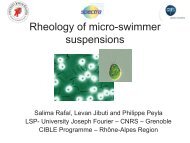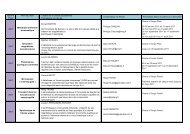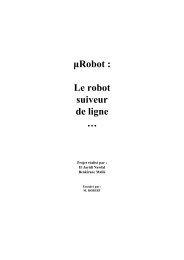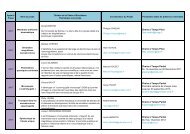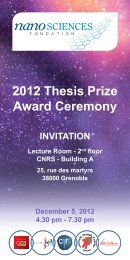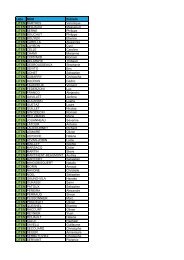Yoshio NISHI - Fondation Nanosciences
Yoshio NISHI - Fondation Nanosciences
Yoshio NISHI - Fondation Nanosciences
Create successful ePaper yourself
Turn your PDF publications into a flip-book with our unique Google optimized e-Paper software.
Biography of <strong>Yoshio</strong> <strong>NISHI</strong><br />
<strong>Yoshio</strong> Nishi received BS in material science and PhD in electronics engineering from<br />
Waseda University and University of Tokyo, respectively. He joined Toshiba R&D Center<br />
where he studied silicon process technology and MOS device physics, resulting in a variety<br />
of achievements including discovery of Si-SiO2 interface paramagnetic PB center, the<br />
structural origin of interface states.<br />
Later he led the development of the world first 1Mbit CMOSDRAM, 16bit SOS<br />
microprocessor. He joined Hewlett-Packard Laboratories in 1986 as director of silicon<br />
process laboratory for high performance CMOS R&D, followed by joinning Texas Instruments<br />
as senior vice president and director of R&D in 1995. Since 2002 he has been professor of<br />
electrical engineering, Stanford University, where he serves as director of research for Center<br />
for Integrated Systems, director, Stanford Site of National Nanotechnology Infrastructure<br />
Network.<br />
His research activities cover resistive switching nonvolatile memory, high performance<br />
alternative material channel MOSFETs, Ge and Si optical transmitter and graphene research.<br />
He published more than 250 papers and conference presentations and hold more than 50<br />
patents in Japan and US. He is IEEE Fellow, and recipients of 1995 IEEE Jack Morton<br />
Award, 2002 IEEE Robert Noyce Medal, 2007 Technology Management award, 2008 SEMI<br />
Lifetime achievements award.<br />
<strong>Yoshio</strong> <strong>NISHI</strong><br />
Email: nishiy@stanford.edu



